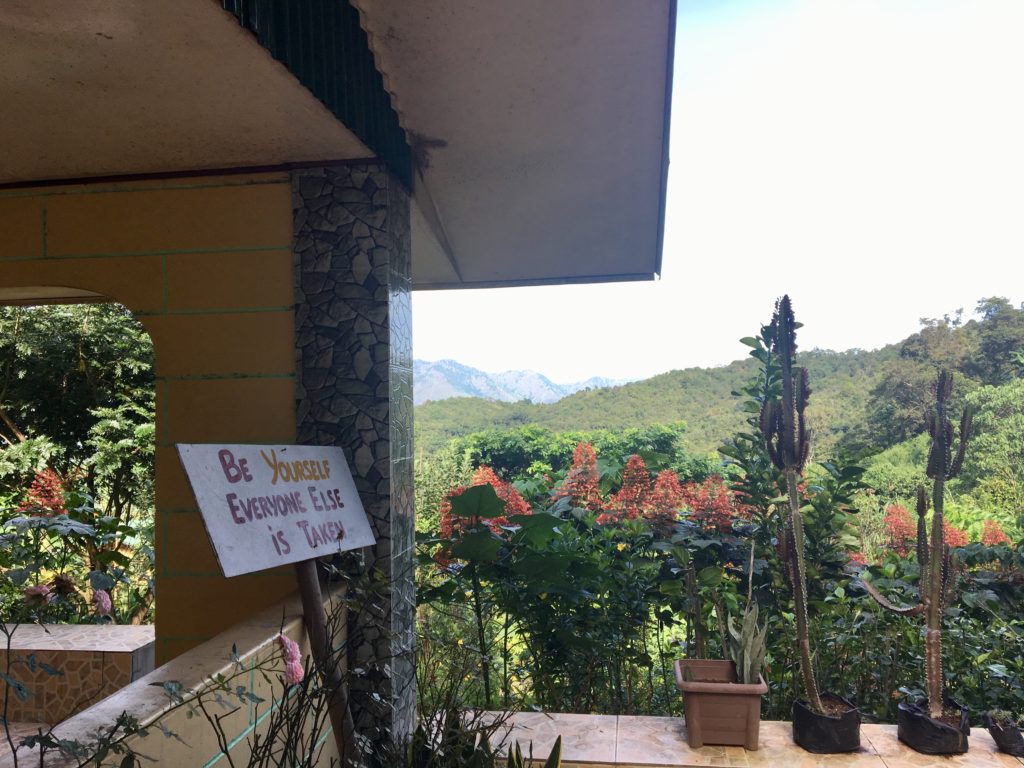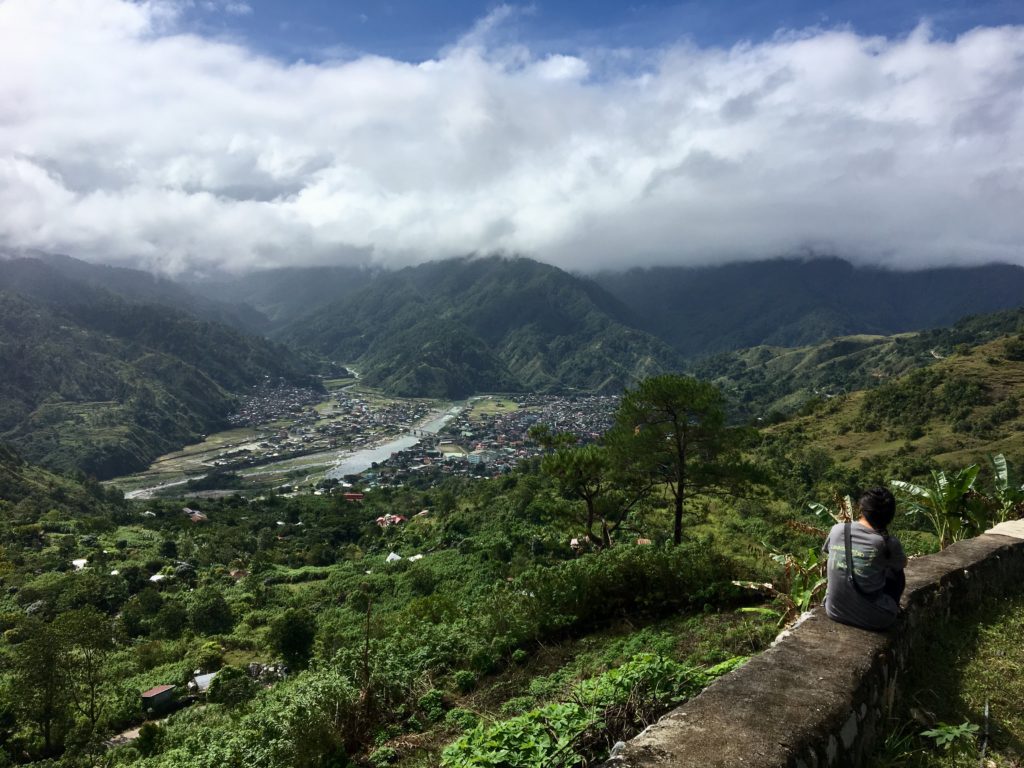
After a month of traveling the Philippines, I wanted to write something that attempts to capture a bit of what this adventure has been like. Most of us are really into, if not borderline-obsessed with, taking photos of all the new places we go to in order to share our experience with everyone we know and have a tangible, permanent record of it for ourselves. And I’ve taken my fair share of photos here (and maybe more than my fair share of Instagram postings, sorry… those likes are just rather addictive), but photos can ultimately only capture experiences at a surface-level. Just the sight of a place. I want to tell you about the people who live in those places; the culture behind them; the feelings I’ve had and the things I’ve learned.
Sort of a daunting task, why is why most don’t bother trying and stick to their Facebook albums, but most people also have a job and other responsibilities, so I understand I am in a far better position to dedicate time to this endeavor. I also want to write all of these posts because I’m too lazy to verbalize this information over and over again in catch-up conversations when I get back home – hopefully you all can read them and then ask thoughtful follow up questions! But no pressure 
So anyway. The Philippines. I did a lot of cool things here. Like farming! I lived and worked as a volunteer on an indigenous organic family farm in the mountains of Northern Luzon for nine days, learning how to create natural fertilizer and compost, cook traditional dishes (okay, mostly I just ate them), speak a bit of Tagalog, and even sort of conquer my fear of spiders by reluctantly co-existing in my cottage with several eight-legged friends who also happened to be the size of small dinner plates.
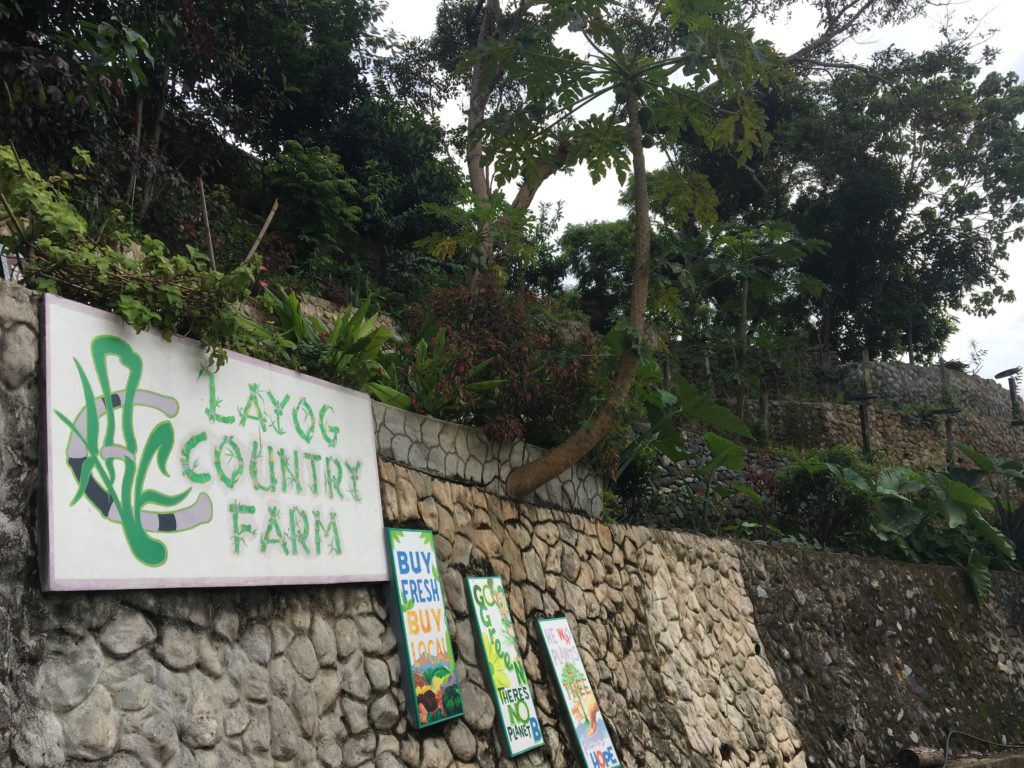

I went spelunking through gigantic underground caves in Sagada, which involved squeezing through absurdly small holes, rappelling up and down huge cliffs, wading through waist-high water, and trying not to get too covered in bat guano.
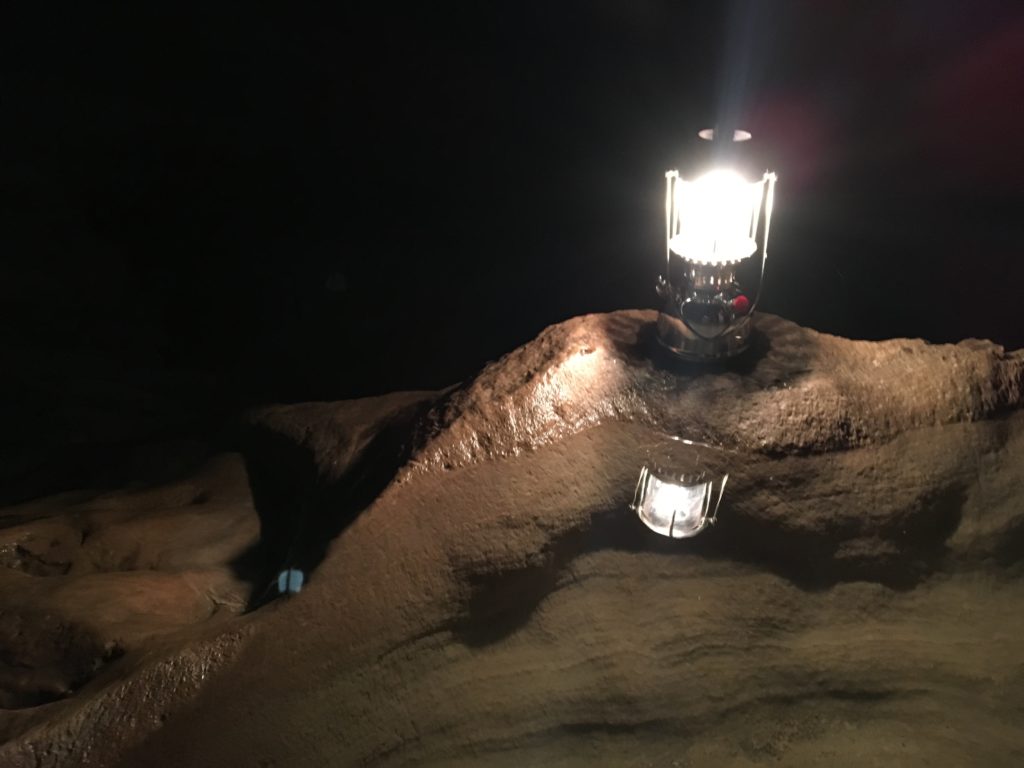
I spent two weeks island-hopping beautiful Palawan, chilling in hammocks on white-sand beaches by day and having epic 5-hour jam sessions with Filipino reggae bands by night. I even got my scuba diving license, which involved 24 hours of learning how to operate all the gear and take it off/put it on underwater, regulating my breath and buoyancy while 60 feet underwater, performing emergency rescue skills, studying theory, and taking a fairly intensive written exam (math was involved, who knew).
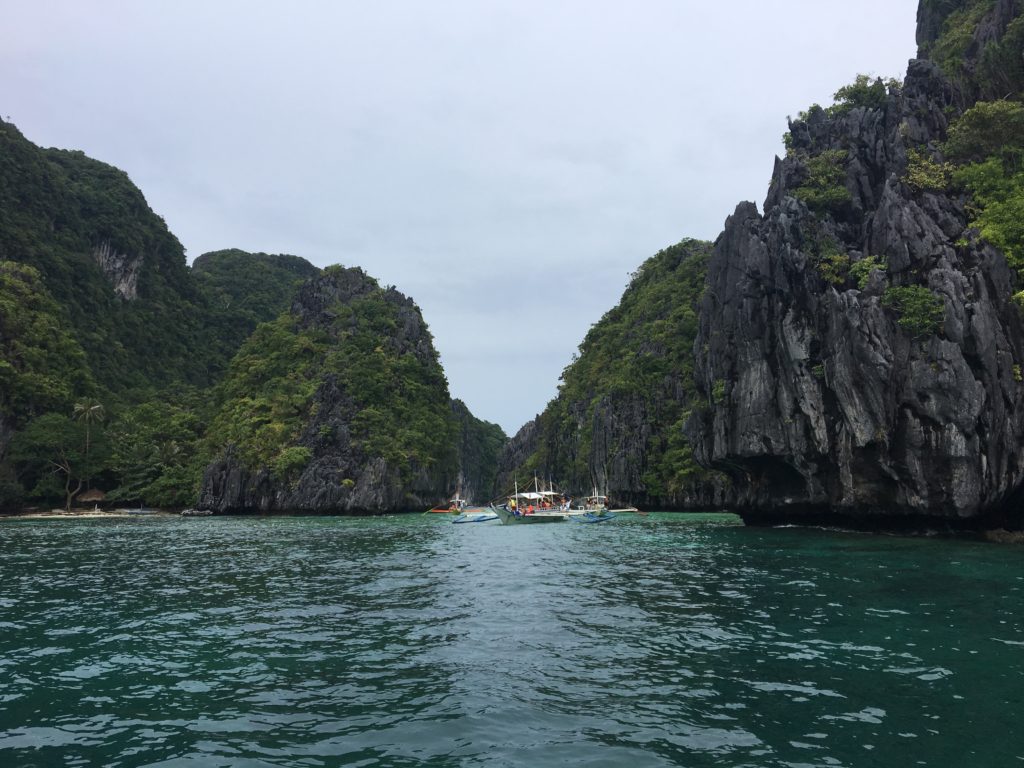
The Philippines is probably the most naturally beautiful place I’ve ever been to in my life, and I spent approximately 70% of my time here just gaping in silent disbelief at how jaw-droppingly gorgeous my surroundings were everywhere I went. But ultimately, what made my experience here so memorable wasn’t the nature – it was the people. I had a feeling I’d vibe with folks in the Philippines not just because everyone speaks English, but because the majority of my friends are – not Japanese American, not white, but Filipino American. Also, one of my favorite community organizations ever is the Pilipino Worker Center in LA. Random, I guess, but evidently we get along well, and I thought some of that affinity could maybe translate to here. Of course, there’s no substitution for my awesome friends, but I thoroughly loved every second of my time getting to know people from all over the Philippines over the course of a month.
Observations of the Philippines
Three general themes I’ve gathered from the nine places I visited; obviously generalizations and not meant as blanket statements:
#1: Everyone is singing
Part of the reason why I was interested in coming here was because I knew people in the Philippines are fond of singing, a trait we share. But upon arriving, I quickly realized I had vastly underestimated just how much fondness Pilipinos harbor for the act of singing.
After our plane first touched down in Manila at 1 in the morning and I started shuffling zombie-like across the terminal, I kept hearing faint snippets of song emanating from my fellow passengers. At first I thought I was hallucinating them – it had been a long flight, after all. But then I saw a seven year old boy unmistakably belting out Mariah Carey at baggage claim. Moments later, I witnessed the security guard at arrivals break into a few lines of an undistinguishable song. To be clear, we’re talking about airport security guards here, supposedly the least fun human beings in the whole world.
All right, here are my people, I thought, feeling a little thrill of excitement course through me. Finally I had found a culture that wouldn’t give me strange looks for all of my spontaneous outbursts of musical theater melodies, which happens daily in the United States. It was a bit surreal to realize that here, this weird quality of mine made me the norm rather than the exception.
Things quickly started to escalade from there. In Baguio, my first stop of the trip, I trekked to the local public market to get some fruit and spotted a Philippines national singing contest broadcasted on TVs every few feet, the shopkeepers glued to them as if viewing a major NBA championship playoff. Walking back through the narrow streets and ally ways around 5PM, I discerned the angst-ridden chorus of “All By Myself” by Celine Dion being passionately vocalized in an upstairs karaoke bar.
That night around midnight, as I laid in bed in my bare-bones transient room on the fifth floor of a street best known for crack dealing and prostitution (as a tattoo artist friend I met that day at the park helpfully informed me) I couldn’t sleep because the surrounding air kept being punctured again and again by the sounds of a dozen different people belting the most dramatic female diva ballads they could select on their karaoke menus as loudly as humanely possible. I finally fell asleep around 1 and was woken up at six AM the next morning by guess what? The karaoke singers, at it again after a short five hour sleeping break.
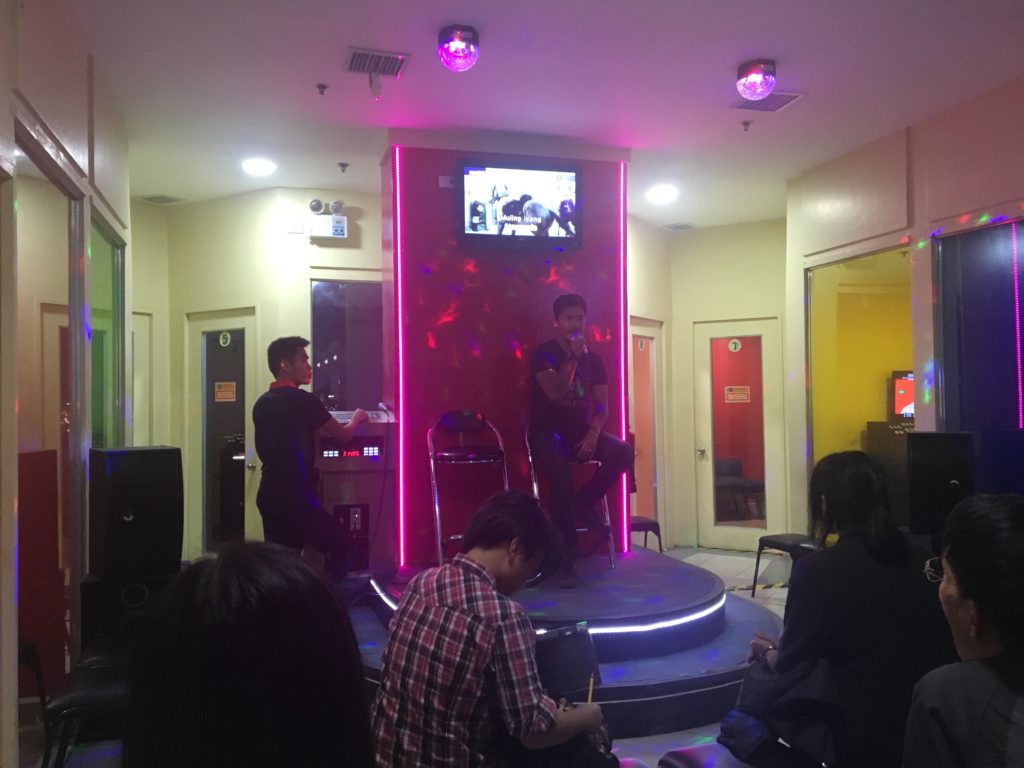
“People really like singing here, huh?” I asked a week later of one of the Filipino college students getting his certification at the organic farm I was volunteering at.
“Being in the Philippines is like living in a musical,” he replied, completely dead-pan. “Everyone is singing all. The. Time. I’ll be in a store in Manila and the shop owner will be sweeping the floor and then randomly start singing and then other people will just walk in and join. I’m like, are you guys serious? This is real life?”
Not like I didn’t jump in with abandon as the singing enthusiast you all know me to be. I channeled my best Mariah and Whitney for karaoke in city malls, at beachfront bars, and in tiny mountain towns. I sang Alicia Keys with the band at two reggae bars and jammed with the college students on the farm and my Couchsurfing host and ten people at a cafe in Puerto Princesa. I pretended I was Moana and serenaded my fellow boat mates with “How Far I’ll Go” during our island-hopping tours, as I figured that was the closest I’ll get to being Moana. In one month in the Philippines, I sang more in total than I have in all five years of my post-college life, and relished every second of it.
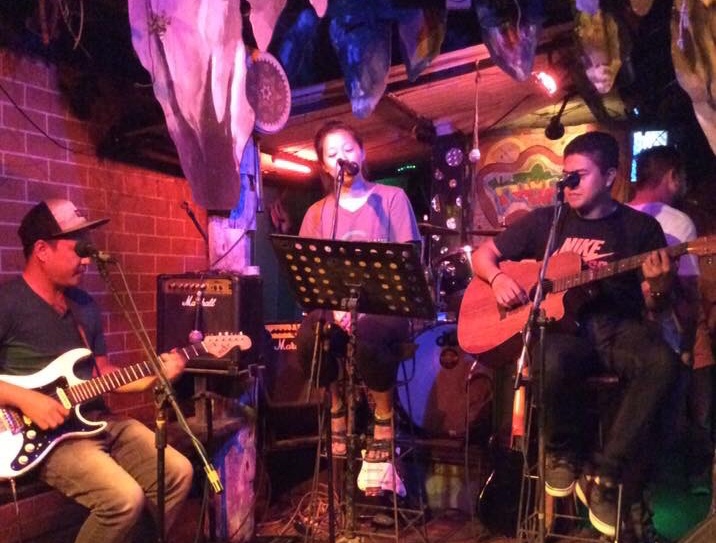
#2: Everyone feels like my family
I’m not sure how this is possible, but nearly every stranger I meet in the Philippines feels like they could be my auntie or grandma or younger brother or cousin. That’s how friendly and generous they are, and how comfortable they made me feel. Everyone seems like one big family.
When I was waiting by the side of a dusty road for the bus to Sagada, the middle-aged ladies sitting next to me spotted my gruesome insect-bitten limbs and asked me in concern about them, trying to discern their origins. “Maybe bedbugs,” they mused and I immediately recalled my idyllic dream of living full-time farm life before it had even gotten a chance to take a tentative foray out of its infant stage. When the rusty Jeepney bus finally appeared, to my chagrin it was already packed full of people. But instead of bypassing us indifferently, it came to a halt and all the men clambered out and climbed onto the roof of the vehicle to let the women sit inside, hoisting our bags up with them to free more space.
“Can I sit up there too?” I asked, thinking it would make for a good story to hold onto the top of a battered Jeepney for dear life through a windy mountain road.
“Sure,” the men said, motioning me to join them.
“There’s a spot here inside, better come in here,” the middle-aged ladies said, hastily squishing everyone even closer together to make room for me, clearly predicting a different ending to the story.
As we started down the bumpy mountain path, squeezed together side by side like a can of sardines (I’ve never actually seen a can of sardines but it just feels like good imagery), I marveled at how completely opposite this unfolding scene was from commuter culture in the US. Back home on public transportation, people attempt to take up as much space as possible and make room only when absolutely forced, and the more tightly packed the bus, the more tense the atmosphere. That is, if they even take the bus – most of us elect to drive ourselves, and with that comes even more heightened feelings of aggression and ill will towards our fellow commuters.
But here, everyone made room happily for new passengers. Every time someone clambered inside the Jeepney it felt like they were joining a party. Everyone was chatting to each other across the bus, and because the discourse wasn’t very English-like I couldn’t figure out if people all knew each other already or if they were just really amicable. Even the drivers would give friendly little honks to each other as they passed by on the road.
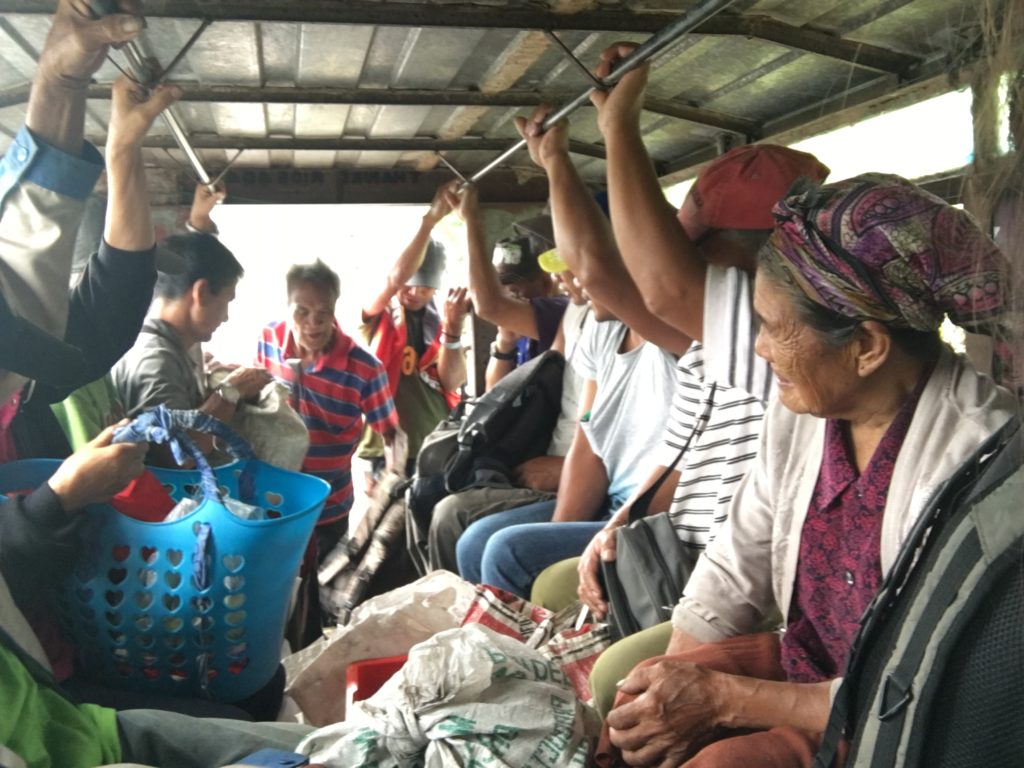
Then a nice lady started talking to me too (by the way, this is a rough outline of many, many other conversations I’ve had with locals in the Philippines):
“Where are you from?”
“California.”
“But your face looks… Korean?” (Chinese was also a popular contender)
“Japanese!”
“Ah, so you’re half Japanese and half American?”
“No, I’m like… 100% Japanese and 100% American.” (I would elaborate on this and depending on the appropriateness of the situation I’d also attempt to start a spirited dialogue on what “American” means, how white people are also all immigrants to the US, etc etc.)
“And you are traveling alone?”
“Yup.”
“You have no companion?” (it was always phrased exactly like this, and always asked in an incredulous tone)
“Yup, it’s just me.”
“Do you have friends here?”
“Not yet, but I will. I make them as I go.”
It’s very easy here, I would explain. And it’s true. In 20 countries I’ve been to in my life, I can say that the Philippines has been by far the easiest place in the world for me to connect with people.
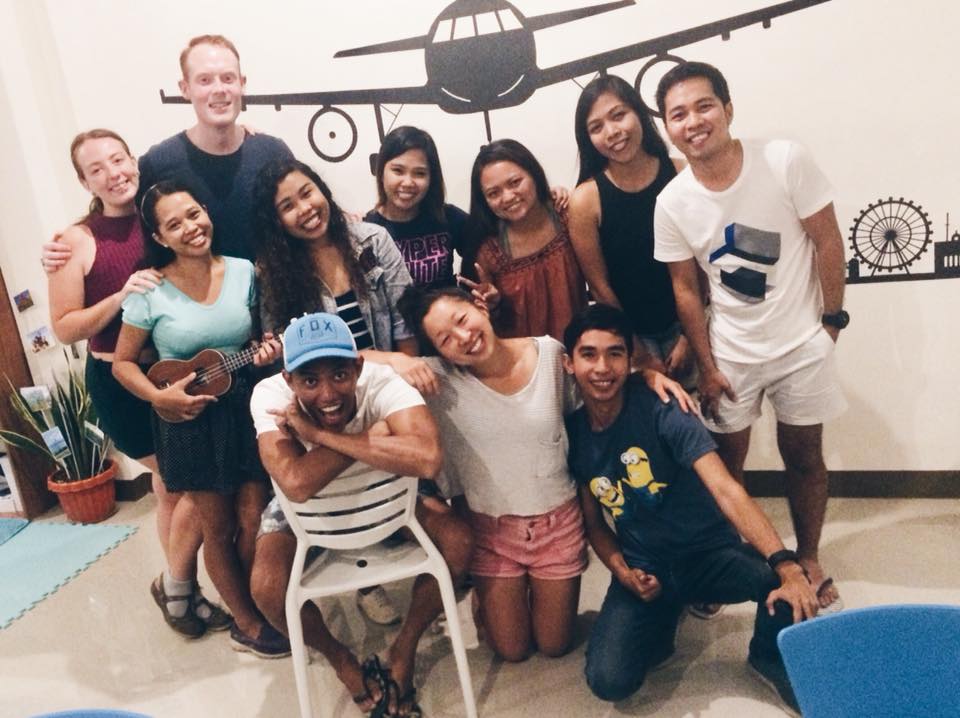
“You do well in the Philippines if you’re a chill person, not aggressive or easily upset,” a new homie explained to me a few days ago. “We’re chill about everything here. Patient. Like even if one car hits another on the street, the drivers get out and are like, hey, it’s cool, we’re all friends here right. Come over for beers later and we’ll figure it out.”
“I rear ended a guy a few months ago in LA and he sued me for eight thousand dollars,” I replied.
“Ah. He probably wouldn’t like it here very much then.”
#3: Millennials here are really good at turning their dreams into reality
In my time here, I’ve been struck by how many young people I’ve met are charting their own path – realizing a passion and vision for something they want to achieve, then pursuing it and making it a reality. It’s ironic that in the U.S. – the so-called land of opportunity – the status quo is actually just to search for and apply to jobs that already exist. The safe route. But here, the idea of starting an entirely new project/business, something no one has ever done before, seems to be totally normal and solidly in the realm of the possible.
For example, James, my wonderful Couchsurfing host in Puerto Princesa, loves traveling by way of hammock, so he decided to invent a new product: a hammock with a mosquito net that converts into a travel neck pillow. He figured out how to source recycled materials, create the design, and share it with the masses, and now Hammock Republic is the most popular hammock brand in the Philippines. He sustains himself entirely on income from the business, so he travels the world at the same time. He’s also a well-known travel blogger and a yoga teacher (we even did a morning session in his apartment together), and plans to open a healthy/mindful cafe/yoga studio in El Nido in the next few months. When I asked him where he got the idea for Hammock Republic, he said it actually came to him during a meditation session.
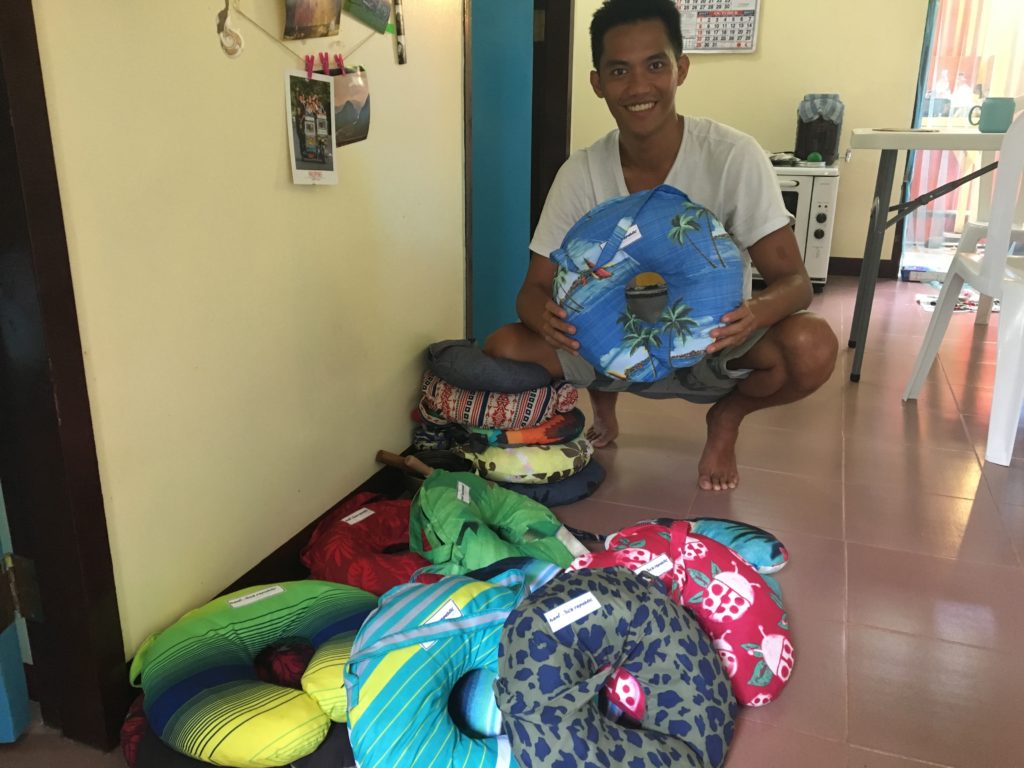
Efren, another homie I met in Palawan, opened his own diving center and is now building a hostel upstairs. He likes climbing mountains, so he set a goal of climbing the highest mountain of all seven continents in the world, which the Palawan government somehow found out about and now wants to sponsor his whole trip. No big deal.
I met the third homie, Charlie, because I ran into one of my fellow farm volunteers weeks later randomly at a restaurant in Coron and he mentioned there was a secret natural pool nearby so I hitched a tricycle ride over to the spot he told me to go to and when I got there I met Charlie and he explained it was actually his land that he was in the process of developing with a friend. “Mount Avangan Eco-Adventure Park”, they planned on calling it, with the goal of creating a sort of forest haven for people to camp, hike, swim, and learn sustainable farming and building with recycled materials. It’s an awesome counter-balance to the rapid development and commercialization of Coron, as it’s intended to be a place that preserves nature and helps people get closer to it, not further away. They only started construction three months ago and have already made a ton of progress:
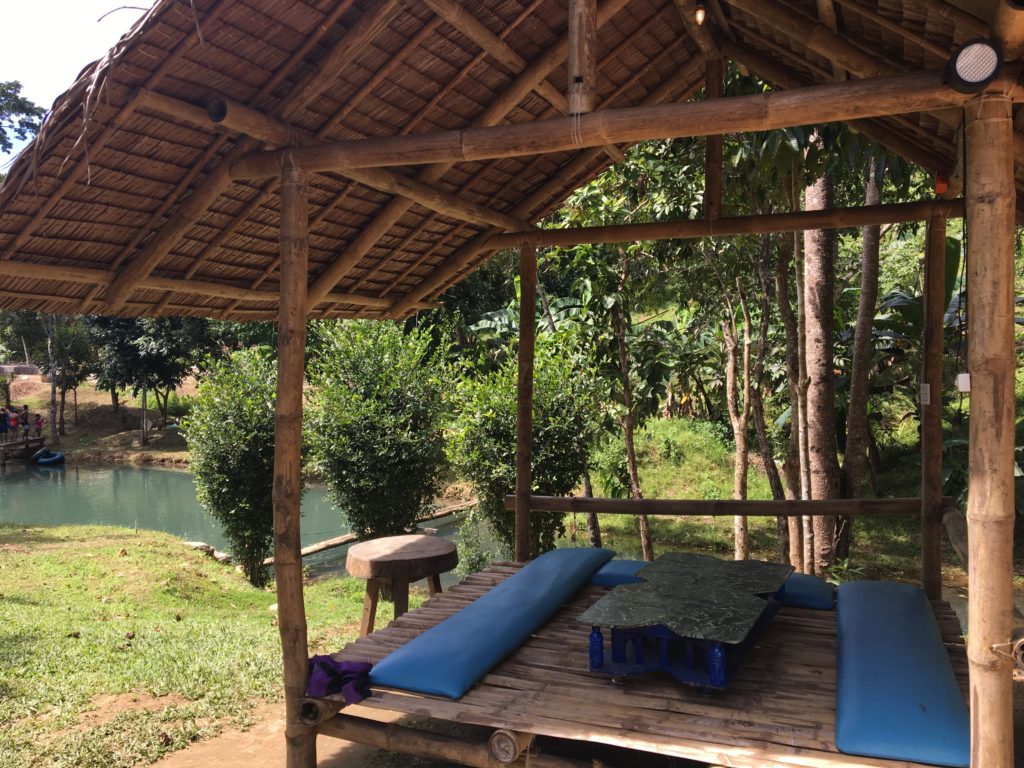
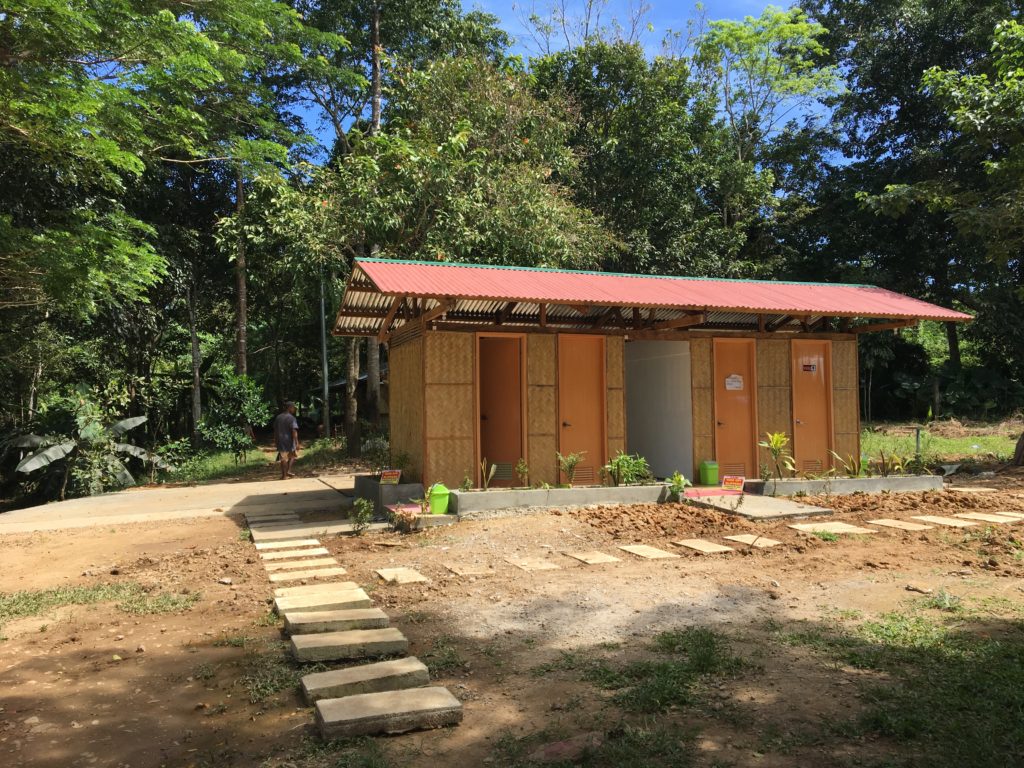
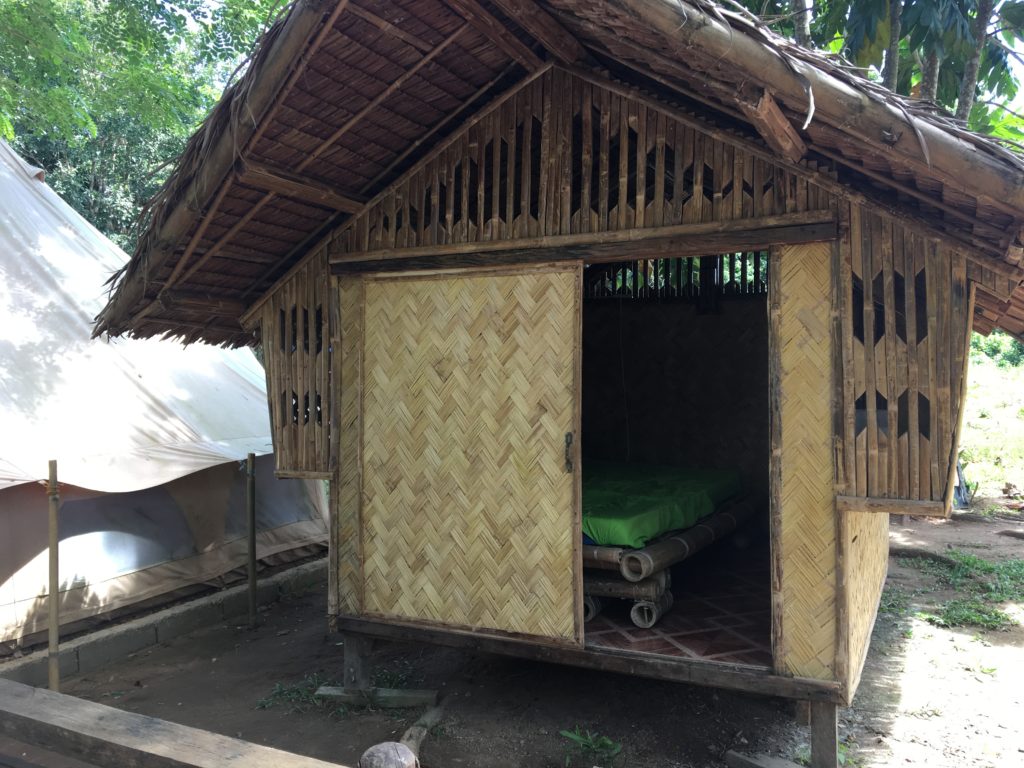
“How did you guys even know how to create all this?” I asked Charlie, gesturing around at the bamboo hut setups.
He shrugged. “It was easy. We just did it.”
“Maybe for you. I don’t know how to build anything like this.”
“Nah. If you believe it can happen, then you can make it happen. I used to be a tour guide, but it really didn’t fulfill me, but now I think building this place, teaching our people how to reuse plastic and grow food, learning to take care of nature, that’s my purpose. Everyone has a purpose, right? Do you know what yours is?”
“I know what I want to do, but I don’t know how to do it,” I said. “How am I supposed to fulfill my purpose? It’s difficult, isn’t it?”
He smiled. “It’s not hard, and it’s not easy.” He paused and laughed. “It is what it is. I’ll just leave you with that.”
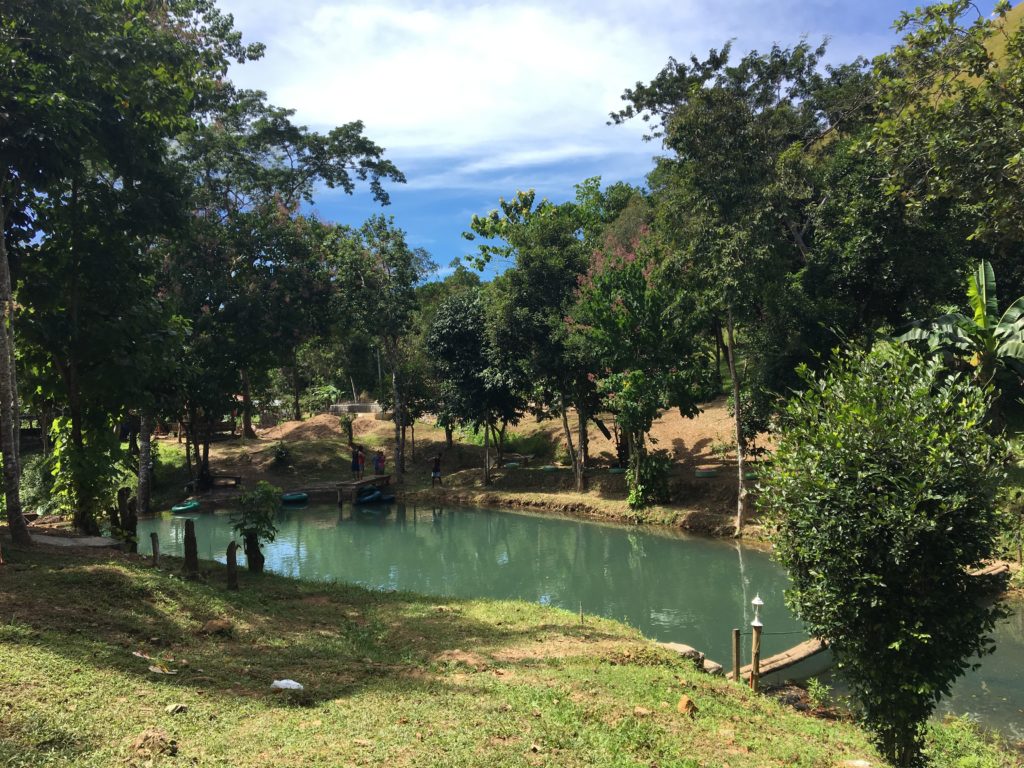
What struck me about all of these people is 1, how casual and humble they seem to be about their endeavors, like they didn’t really think too hard before pursuing these projects and just assumed things would work out one way or another. And now, they’re totally successful but they don’t really think too hard about that, either.
And 2, how free and happy they seem. They’re living simply and naturally, without a lot of physical or mental stuff crowding their space, and living entirely day-by-day, moment-to-moment. Being around them gave me an immense sense of peace. And it made me start to think that if they can chart their own lives, I can too.
Random Other Philippines Things I Appreciate
-In the small town of Coron exists a garbage truck. This garbage truck travels around town every morning with a giant speaker on top of it blaring a Filipino song that bears a striking resemblance to “Puff the Magic Dragon” in order to let everyone know to put their trash out for collection. Apparently, they change the song every year and the lyrics have to do with trash and not littering. My Couchsurfing host said last year’s chorus was like “Don’t, put your, don’t put your garbage in the street, please, please throw it away” or something very roughly like that.
So wait, does that mean the city actually commissions a song for the sole purpose of being used as the rallying cry of trash collection? Who writes the song? Whose idea was this? I had so many questions and received no answers.
-Sagada, a town in the mountains twelve hours north of Manila, is indigenous AF. Self-governed by the entire community for thousands of years, although today they have a modern city hall with a mayor, the elected political leaders still go to the elders for counsel and approval of every decision. Only native Sagadans are allowed to own property, as well.
“We were the only place in Mountain Province that was able to resist the Spanish colonization,” explained Lester, a cool dude in town who owns a private museum of indigenous Igorot cultural artifacts.
“Oh dang, how did that happen?” I asked.
“We’re head hunters, so we just cut their heads off when they came here,” he said.
“Ah.”
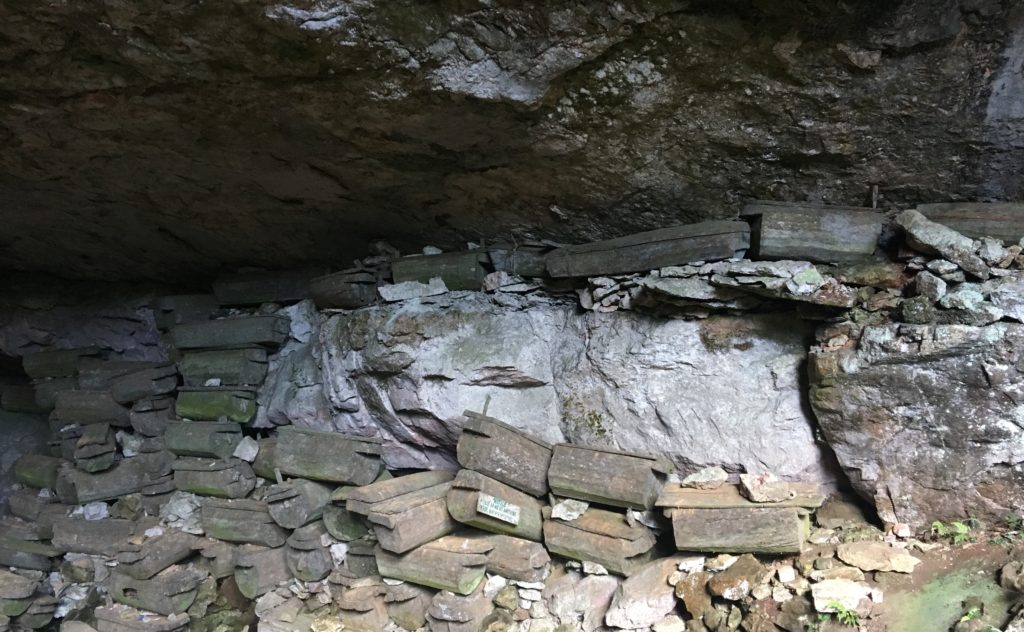
-One of the Filipino customs I was most excited to learn about was the practice of completely disregarding utensils in favor of eating with one’s hands. I’ve known that I prefer eating with my hands since I started eating solid food at age 0.5, but since age three or so it has been socially unacceptable to continue this manner. So for the last twenty four years, I’ve used forks and chopsticks only begrudgingly while secretly believing them to be a pretentious and unnecessary apparatus. I think utensils create yet another unnatural barrier between ourselves and the food we eat. It distances us from the earth, ya know?
So when the owner of the family farm I was volunteering at told me I could use my hands to consume the dinner of grilled fish, rice and vegetables he prepared, I thought it was too good to be true. But then he started digging in utensil-less and I followed suit. And it was awesome and satisfying in a way that’s hard to explain. All I know is that when you can touch your food, you know it more, and it’s important to really know what we fuel and nourish our bodies with.
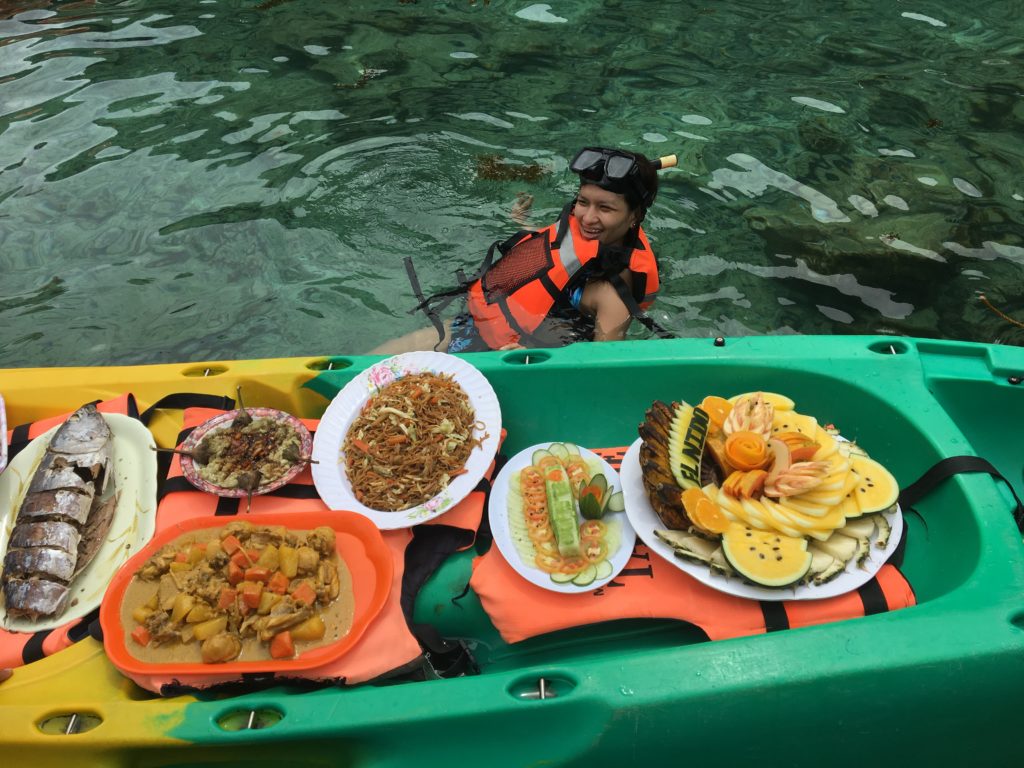
-Lastly Cebu Pacific, a Philippines airline, played a trivia game with all the passengers on our flight to Manila called “Hashtag Millennials”. They would call out acronyms frequently used by #millennials and the first person to raise their hand and give the correct full phrase got an adorable yellow travel pillow. We all got really into it and though I sadly ended up pillow-less after an intense three rounds, I think the world would be a more charming and pleasant place if everyone played games on their airplane rides. And we’d all finally have an interesting answer to the question of “how was your flight?” posed by friends and family we travel to visit.
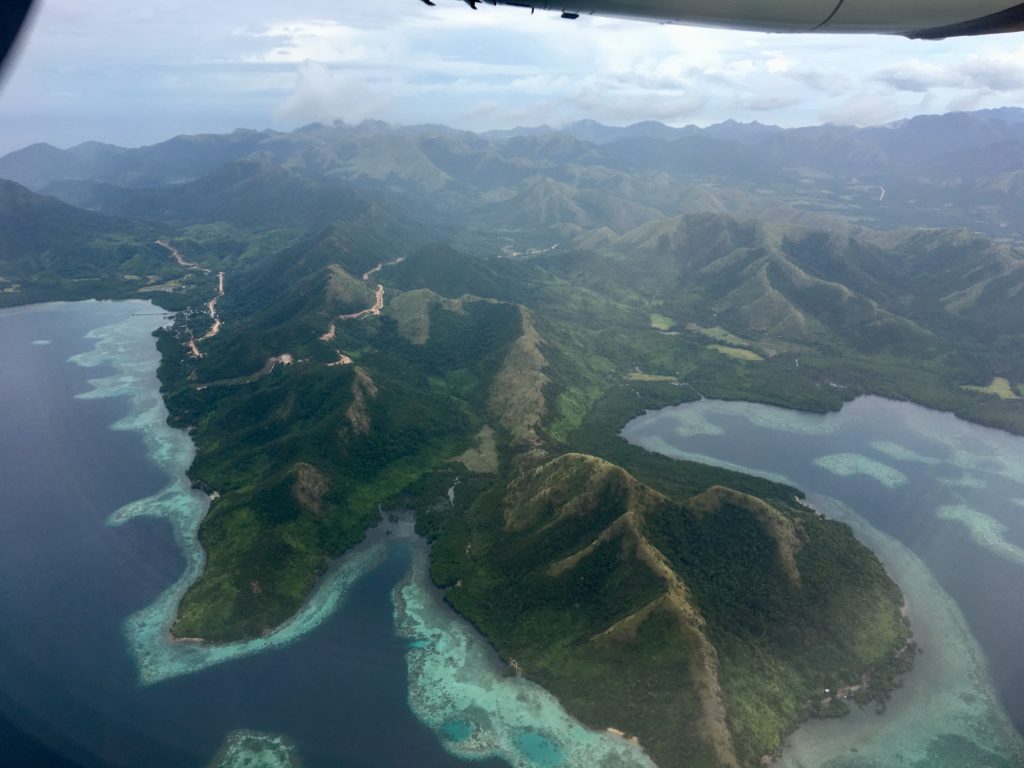
Long story short, I can now confirm that it is indeed more fun in the Philippines, as the Department of Tourism suggests.
———————————
Thanks for reading if you managed to get all the way down here. This officially concludes my Philippines post, but never fear, I still plan to write one more detailing my overall reflections and lessons from this whole trip. I might even bring back the handmade iPad drawings!
